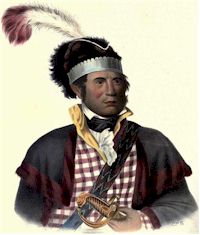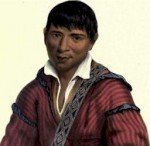Writing more then just a book about an Indian legend, Samuel Gatschet’s classic ethnographic manuscript, A Migration Legend of the Creek Indians, delves deeply into the enthnography of the Southern tribes of Creek Indians – providing a look into the linguistic groups of the Gulf States, the tribes which spoke those languages, the villages they lived in, and a more comprehensive study of Creek life. Finally, Gatschet provides an overall study of Indian migration legends, and then gives an English translation of the actual Creek migration legend.
The present publication proposes to bring before the public, in popular form, some scientific results obtained while studying the language and ethnology of the Creek tribe and its ethnic congeners. The method of furthering ethnographic study by all the means which the study of language can afford, has been too little appreciated up to the present time, but has been constantly kept in view in this publication. Language is not only the most general and important help to ethnology, but outside of race, it is also the most ancient of all; ethnologists are well aware of this fact, but do not generally apply it to their studies, because they find it too tedious to acquire the language of unlettered tribes by staying long enough among them.

Creek Chief
The help afforded to linguistic studies by the books published in and upon the Indian languages is valuable only for a few among the great number of the dialects. The majority of them are laid down in phonetically defective missionary alphabets, about which we are prompted to repeat what the citizens of the young colony of Mexico wrote to the government of Spain, in Cortez’s time: “Send to us pious and Christian men, as preachers, bishops and missionaries, but do not send us scholars, who, with their pettifogging distinctions and love of contention, create nothing but disorder and strife.” In the same manner, some Creek scholars and churchmen agreed five times in succession, before 1853, upon standard alphabets to be followed in transcribing Creek, but, as Judge G. W. Stidham justly remarks, made it worse each time. To arrive at trustworthy results, it is therefore necessary to investigate the forms of speech as they are in use among the Indians themselves.
Very few statements of the Kasihta migration legend can be made available for history. It is wholly legendary, in its first portion even mythical; it is of a comparatively remote age, exceedingly instructive for ethnography and for the development of religious ideas; it is full of that sort of naïveté which we like so much to meet in the mental productions of our aborigines, and affords striking instances of the debasing and brutalizing influence of the unrestricted belief in the supernatural and miraculous. Of the sun-worship, which underlies the religions of all the tribes in the Gulf territories, only slight intimations are contained in the Kasi’hta legend, and the important problem, whether the Creeks ever crossed the Mississippi river from west to east in their migrations, seems to be settled by it in the negative, although other legends may be adduced as speaking in its favor.
Owing to deficient information on several Maskoki dialects, I have not touched the problem of their comparative age. From the few indications on hand, I am inclined to think that Alibamu and Koassáti possess more and Cha’hta less archaic forms than the other dialect-groups.

From Rev. H. C. Buckner’s Creek Grammar, with its numerous defects, I have extracted but a few conjugational forms of the verb isita to take, but have availed myself of some linguistic manuscripts of Mrs. A. E. W. Robertson, the industrious teacher and translator of many parts of the Bible into Creek.
The re-translation of the legend into Creek and Hitchiti is due to Judge G. W. Stidham, of Eufaula, Indian Territory, who in infancy witnessed the emigration of his tribe, the Hitchiti, from the Chatahuchi River into their present location. My heartfelt thanks are also due to other Indians, who have materially helped me in my repeated revisions of the subject matter embodied in these volumes, and in other investigations. They were the Creek delegates to the Federal government, Chiefs Chicote and Ispahidshi, Messrs. S. B. Callaghan, Grayson and Hodge.
I also fully acknowledge the services tendered by the officers of the U. S. Bureau of Ethnology, as well as by Dr. Daniel G. Brinton and by General Albert Pike, who placed the rich shelves of their libraries at my disposition. In the kindest manner I was furnished with scientific statements of various kinds by Messrs. W. R. Gerard, C. C. Royce and Dr. W. C. Hoffmann.
- Southern Families of Indians
- Linguistic Groups Of The Gulf States
- Allophylic Languages Among Southern Tribes
- The Maskoki Family of Tribes
- The Name Maskoki: Its Use and Signification
- The Common Maskoki Language
- Alibamu Indian Tribe
- Apalachi Indian Tribe
- Cha’hta Indian Tribe
- Chicasa Indian Tribe
- Hitchiti Indian Tribe
- Koassáti Indian Tribe
- Mikasuki Indian Tribe
- Seminole Indian Tribe
- Yamacraw Indian Tribe
- Yamassi Indian Tribe
- Indian Tribes On The Yazoo River
- Creek Indian Tribe
- Indian Migration Legends
